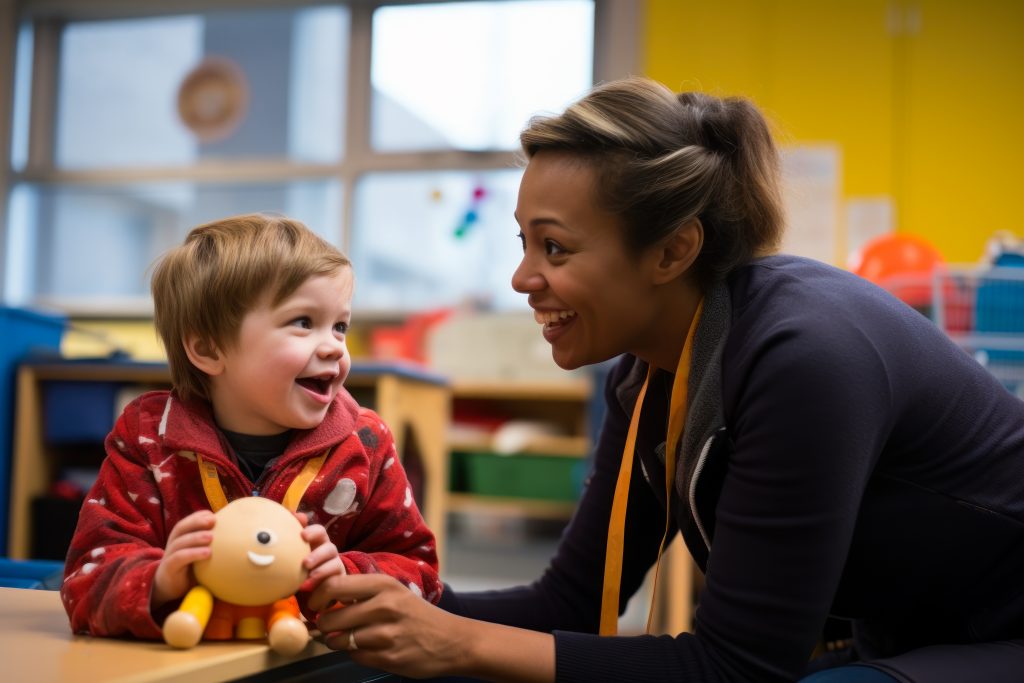Raising a child with autism comes with unique challenges, and finding effective ways to support their development is often a top priority for parents. One practical tool that has helped many families is Applied Behavior Analysis (ABA) therapy.

A collection of sensory-friendly learning materials and resources, including tactile books, noise-cancelling headphones, and visual aids, aimed at providing autistic children with a more engaging and comfortable educational experience.
ABA is widely recognized for its structured approach to improving communication, social skills, and daily living abilities. It also provides real, actionable strategies that can be tailored to your child’s specific needs.
By understanding what ABA therapy offers, you can confidently support your child’s growth and make everyday life a little bit easier and more rewarding for both you and your child.
ABA Therapy: The Basics
Applied Behavior Analysis (ABA) therapy is a structured, evidence-based approach designed to help individuals with autism and other developmental conditions improve specific behaviors and skills.
It is based on the principles of behavior science, which explore how behaviors are learned and how they can be changed effectively. A specialized form of this approach, known as focused ABA therapy, targets the most urgent or significant behaviors or skills of the individual.
The primary goal of ABA therapy is to increase positive behaviors, like communication and social interactions, while reducing behaviors that interfere with learning or daily functioning.
If you are planning ABA therapy for your child, here’s what to expect:
- Assessment: ABA therapy begins with an assessment by a board-certified behavior analyst (BCBA) to evaluate your child’s abilities, challenges, and areas needing improvement. This may involve observations, parent interviews, and reviewing past records.
- Individualized Treatment Plan: Based on the assessment, the therapist creates a tailored treatment plan with specific skills to teach, behaviors to modify, and methods to use. The plan includes measurable goals to track your child’s progress over time.
- Data Collection and Analysis: Therapists collect data throughout therapy to monitor progress and adjust strategies as needed. If a method isn’t working, it’s modified to keep the therapy effective and aligned with your child’s needs.
- Regular Review and Adjustment: ABA therapy involves ongoing reviews and adjustments. Therapists regularly meet with you to discuss progress, update goals, and address any concerns, ensuring therapy stays aligned with your child’s development.
By using these methods, ABA therapy offers a practical and systematic approach to helping children with autism develop essential skills, improve communication, and build greater independence.
Techniques in ABA Therapy
ABA therapy uses various techniques to help individuals with autism learn new skills, improve behaviors, and reduce problematic actions. Here are some of the key techniques used:
Discrete Trial Training (DTT)
Discrete trial training breaks down skills into small, teachable steps and uses repeated trials to teach each step. Positive reinforcement is given immediately after correct responses, making learning structured and systematic.
Natural Environment Teaching (NET)
Skills are taught in the child’s natural environment, such as during play or daily routines, making learning more relevant and engaging. This approach uses the child’s interests to motivate learning.
Pivotal Response Training (PRT)
PRT focuses on pivotal areas like motivation, self-management, and response to cues. By targeting these areas, it helps improve a broad range of skills in a more natural and integrated way.

Task Analysis and Chaining
Complex tasks are broken down into smaller steps (task analysis), and each step is taught sequentially through chaining, which can be done forward or backward. This technique is commonly used for teaching daily living skills.
Prompting and Fading
Prompts (verbal, visual, or physical cues) help guide the child to perform desired behaviors. Over time, these prompts are gradually diminished to encourage independence.
Reinforcement
Positive reinforcement, such as praise, toys, or preferred activities, is used to encourage desirable behaviors. Consistent reinforcement strengthens the likelihood of these behaviors being repeated.
Social Skills Training
This technique focuses on teaching children how to interact appropriately with others, including skills like sharing, taking turns, and understanding social cues. It often involves role-playing and group activities.
Behavioral Interventions
Strategies are used to reduce challenging behaviors, such as using differential reinforcement (rewarding positive behaviors while ignoring negative ones) or extinction (removing reinforcement for negative behaviors).
These techniques are often used in combination, customized to each child’s needs, making ABA therapy a flexible and effective approach to supporting children with autism.
How to Support Your Child
Supporting your child during ABA therapy is a crucial part of their success and progress. As a parent, your involvement can make a significant difference in how effectively your child learns and applies new skills. Here are some practical ways you can support your child:
Tip #1: Stay Involved and Informed
Regularly communicate with your child’s therapist, attend training sessions, and ask questions to understand the therapy goals and techniques so you can better support your child at home.
Tip #2: Create a Consistent Routine
Work with the therapist to establish routines that include therapy goals, using consistent prompts and reinforcements to help your child practice and retain new skills.
Tip #3: Practice Skills at Home
Incorporate therapy skills into daily activities, like using words during meals or following instructions during play, to reinforce learning and boost your child’s confidence.
Tip #4: Provide Positive Reinforcement
Use rewards like praise, playtime, or treats to encourage desired behaviors, choosing reinforcements that are meaningful to keep your child motivated.
By actively engaging in your child’s ABA therapy journey, you can create a supportive environment that extends beyond the therapy sessions, helping your child apply their new skills in real-life situations and achieve their full potential.
Wrapping Up
By understanding how ABA works and actively supporting your child through involvement, consistent routines, practice, and positive reinforcement, you can significantly enhance their progress. Your engagement, combined with ABA’s tailored strategies, can help your child develop essential skills and thrive in daily life.
















Add Your Comment